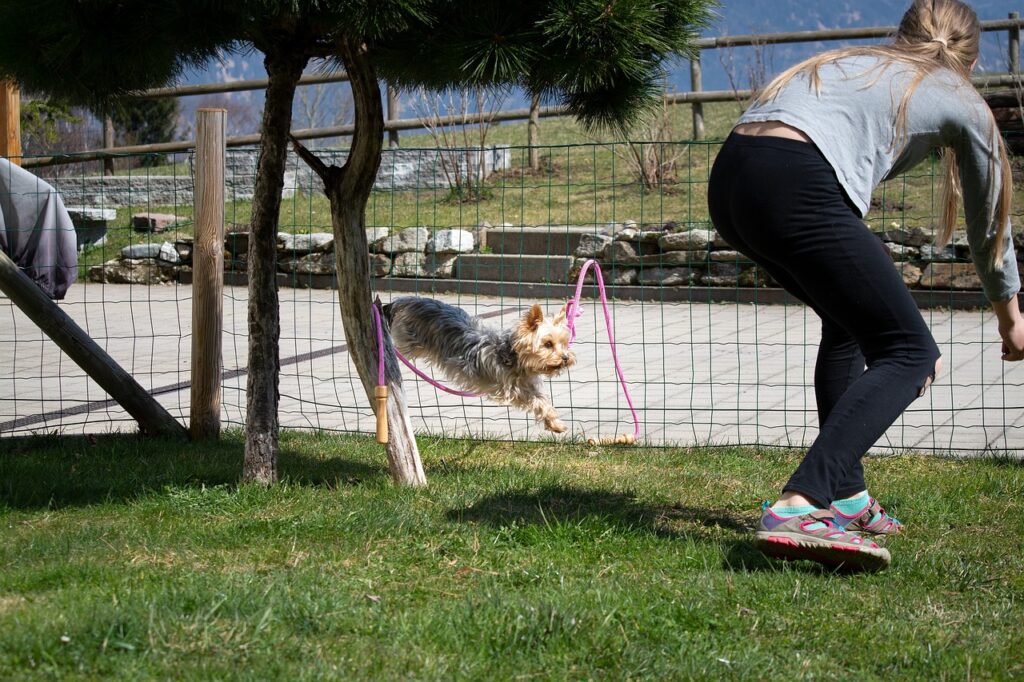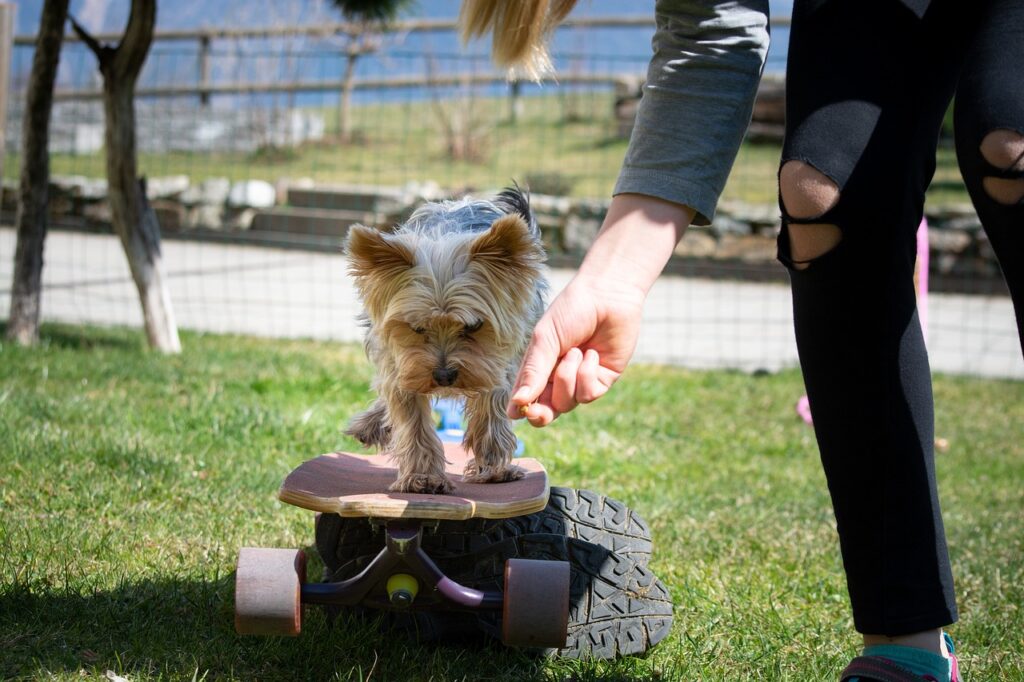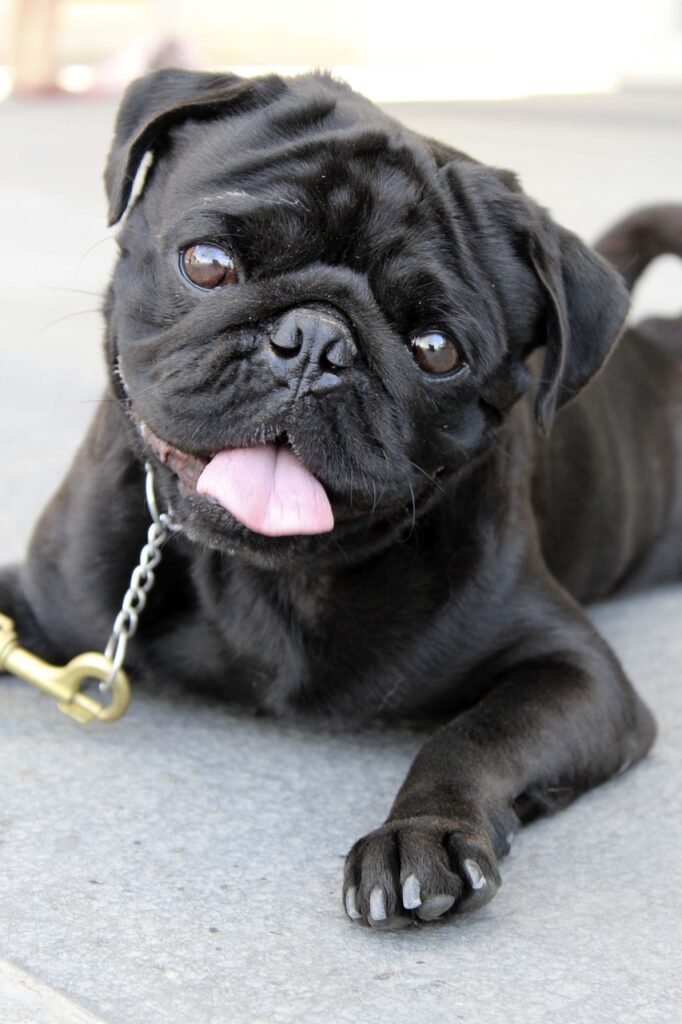
You love your furry friend, but sometimes they can present some challenges when it comes to training. From excessive barking to stubborn behavior, it’s not always smooth sailing. But fear not! In this article, we will explore some common dog training problems and offer friendly and effective solutions to help you and your pup overcome these obstacles. With a little patience and some handy tips, you’ll soon be on your way to a well-behaved and happy pooch. So, let’s get started on this journey towards successful dog training!
House Training Issues
Potty accidents in the house
Having potty accidents in the house can be frustrating for both you and your furry friend. But don’t worry, this is a common issue that many dog owners face. The key to tackling potty accidents is consistency and patience. Establish a regular schedule for potty breaks, and take your dog outside to their designated potty area frequently, especially after meals and naps. Use positive reinforcement such as treats and enthusiastic praise when they successfully go potty outside. If accidents happen indoors, don’t scold or punish your dog; instead, clean the area thoroughly with an enzymatic cleaner to remove any lingering scent that may attract them to the same spot again.
Difficulty in holding bladder or bowels
If your dog is having difficulty holding their bladder or bowels, it could be a sign of an underlying medical issue, such as a urinary tract infection or gastrointestinal problem. In such cases, it’s important to consult with your veterinarian to rule out any medical conditions. If there are no medical issues, the problem may lie in your dog’s training or routine. Ensure that your dog is getting enough opportunities to relieve themselves throughout the day. Consider adjusting their feeding schedule to regulate their bathroom habits. Consistency in training, frequent potty breaks, and creating a positive association with going outside can help improve their ability to hold it.
Marking territory indoors
Marking territory indoors is a common behavior in unneutered male dogs, but it can also be seen in females and neutered males. This behavior is driven by hormones and the need to establish dominance. To address this issue, it is important to first have your dog spayed or neutered, as this can significantly reduce marking behavior. Additionally, thorough cleaning of areas that have been marked is crucial to remove the scent and deter your dog from revisiting the same spot. Consistent training and management techniques, such as using belly bands or diapers, can also help redirect their behavior and discourage marking indoors.
Barking Problems
Excessive barking
Excessive barking can be bothersome for both you and your neighbors. Understanding the underlying reasons behind your dog’s excessive barking is the first step towards addressing the issue. Dogs may bark excessively due to boredom, anxiety, fear, or to alert you to something. To tackle excessive barking, provide your dog with plenty of physical and mental stimulation through regular exercise, training, and interactive toys. Identify the triggers that set off their barking and work on desensitizing them to those stimuli. Positive reinforcement training, using treats and praise, can help reinforce quiet behavior. If the problem persists, consult with a professional dog trainer or a certified animal behaviorist.
Barking at strangers
If your dog frequently barks at strangers, it’s important to address this behavior early on to avoid it becoming a bigger issue. Proper socialization from a young age can help prevent fear and aggression towards unfamiliar people. Gradually expose your dog to new people in a controlled and positive manner, rewarding calm and quiet behavior. Use obedience training to teach your dog basic commands, such as “sit” or “stay,” to redirect their attention and reinforce positive behavior. If the problem persists, consider seeking professional help from a qualified dog trainer to develop a tailored training plan.
Barking for attention
Dogs may bark for attention when they feel lonely, bored, or simply want interaction with their owners. While it is important to give your dog love and attention, it’s essential to teach them appropriate ways to ask for it. Ignoring your dog’s barking can help discourage attention-seeking behavior, as giving in to barking reinforces the behavior. Instead, provide your dog with plenty of mental and physical exercise, interactive toys, and regular playtime to keep them engaged and mentally stimulated. Establish a routine for feeding, exercise, and playtime to give them a sense of predictability and structure.

Leash Training Challenges
Pulling on the leash
If your dog pulls on the leash during walks, it can turn a pleasant stroll into an uncomfortable and frustrating experience. Teaching your dog to walk politely on a leash requires patience and consistent training. Start by using a properly fitting harness or collar and a sturdy leash. Use positive reinforcement training by rewarding your dog for walking by your side or paying attention to you. Practice loose leash walking in a quiet area, gradually introducing distractions as your dog becomes more confident. Consider using techniques like “stop and start” or changing directions when your dog starts to pull, rewarding them for walking nicely beside you. Consistency and positive reinforcement are key to successfully overcoming leash pulling.
Leash reactivity towards other dogs
Leash reactivity towards other dogs is a common problem that many dog owners face. This behavior is often rooted in fear, frustration, or a lack of socialization. It’s important to approach this issue with patience and understanding. Gradually desensitize your dog to the presence of other dogs by using positive reinforcement techniques. Start at a distance where your dog remains calm and reward them for their calm behavior. As they become more comfortable, gradually decrease the distance between your dog and the other dogs. Consider enrolling in a positive reinforcement-based obedience class or seeking the help of a professional trainer experienced in working with reactive dogs.
Refusing to walk on a leash
If your dog refuses to walk on a leash, it can be discouraging. Some dogs may resist walking due to fear, anxiety, or discomfort. Start by ensuring that your dog is comfortable wearing their leash and harness or collar. Allow them to get used to these items indoors before attempting to go outside. Make the walk enticing by using positive reinforcement, such as treats or a favorite toy, to encourage them to move forward. If your dog is anxious or fearful, work on building their confidence through gradual exposure to different environments and reward them for any progress they make. Seek professional help from a qualified trainer if your dog’s aversion to walking persists.
Jumping up on People
Jumping on guests
Jumping on guests is a behavior that can be off-putting and even dangerous, especially if your dog is larger or becomes overly excited. Teaching your dog alternative behaviors, such as sitting or offering a paw, can redirect their jumping impulse. Train your dog to sit and stay before greeting guests, rewarding them for their calm behavior. Consistency is key, so ensure that all family members and visitors are on board with reinforcing the desired behavior and not inadvertently rewarding jumping. Providing your dog with sufficient exercise and mental stimulation can also help reduce the likelihood of jumping as it helps them release excess energy.
Jumping on family members
Jumping on family members can be equally frustrating, especially if it becomes a habit or a safety concern. One effective way to address this behavior is to withhold attention when your dog jumps up. Cross your arms, turn away, and avoid making eye contact to show that jumping is not rewarding. Teach your dog an alternative behavior, such as sitting, and reward them for doing so. Consistently enforce boundaries and provide clear guidelines for your dog’s interactions with family members. Encourage family members to follow the same rules and be patient as your dog learns the appropriate behavior.
Jumping during walks
If your dog jumps during walks, it can make the experience less enjoyable and potentially lead to injuries. Start by ensuring that your dog is properly exercised before going for a walk to help reduce their excess energy. Teach your dog the “heel” command to keep them focused on walking beside you. If your dog starts to jump, stop walking and ignore them until they calm down. Once they are calm, resume the walk and reward them for appropriate behavior. Consistency is key, so be patient and practice these techniques during every walk until jumping becomes a thing of the past.

Chewing and Destructive Behavior
Inappropriate chewing on furniture or belongings
Inappropriate chewing is a common problem, especially in puppies and young dogs. It is important to provide appropriate outlets for your dog’s chewing needs to prevent them from targeting your furniture or belongings. Provide them with a variety of safe and durable chew toys, and make sure they have access to them at all times. When you catch your dog chewing on something they shouldn’t, redirect their attention to an appropriate chew toy and reward them when they engage with it. Consistency is key, so supervise your dog and restrict their access to forbidden items until they learn what is acceptable to chew on.
Digging in the yard
If your dog loves to dig up your beautiful garden or create holes in the yard, it can be frustrating. Digging is a natural behavior for dogs, often driven by instincts or boredom. To discourage this behavior, provide your dog with designated digging areas, such as a sandbox filled with loose soil or a specific section of the yard. Encourage them to dig there by burying toys or treats for them to discover. Make sure your dog gets plenty of exercise, mental stimulation, and attention to prevent boredom. If digging continues to be a problem, consider using deterrents such as chicken wire or gravel in areas you want to protect.
Destroying household items
If your dog has a habit of destroying household items, it’s important to address this behavior to prevent damage and potential hazards. Start by identifying the root cause of the destructive behavior. Dogs may chew and destroy things out of boredom, anxiety, or frustration. Providing your dog with plenty of exercise, mental stimulation, and appropriate chew toys can help redirect their chewing instincts. Use positive reinforcement when your dog engages with appropriate toys, praising and rewarding them for leaving household items untouched. It is also essential to create a safe and enriching environment by keeping valuable or potentially dangerous items out of your dog’s reach to prevent temptation.
Aggression Issues
Aggression towards humans
Aggression towards humans is a serious issue that requires immediate attention. If your dog shows aggression towards humans, it’s crucial to consult with a professional dog trainer or a certified animal behaviorist to develop a tailored behavior modification plan. Aggression can stem from fear, anxiety, possessiveness, or a lack of socialization. A professional can assess the underlying causes and guide you through a structured training program. It’s important to prioritize everyone’s safety and closely follow the guidance of the qualified professional.
Aggression towards other dogs
Aggression towards other dogs can make walks or visits to dog parks stressful for both you and your furry companion. Understanding the triggers that cause your dog’s aggression is essential for effective management and training. Keep your dog on a leash when in public and maintain a safe distance from other dogs. Gradual exposure to other dogs in controlled settings, using positive reinforcement techniques, can help desensitize your dog and improve their behavior. In some cases, it may be necessary to seek professional help from a qualified dog trainer or behaviorist experienced in working with aggression.
Resource guarding aggression
Resource guarding aggression refers to a dog’s defensive behavior around valuable resources, such as food, toys, or even people. This behavior can range from growling and snapping to more severe forms of aggression. It’s crucial to address resource guarding early on to prevent escalation. Consult with a professional dog trainer or behaviorist who can guide you through a behavior modification program to address this issue. In the meantime, avoid situations that trigger resource guarding and practice positive reinforcement techniques to encourage your dog to develop a trusting and non-possessive attitude towards their resources.

Separation Anxiety
Excessive barking or howling when alone
Excessive barking or howling when left alone can be a sign of separation anxiety. Dogs with separation anxiety may fear being left alone and exhibit distress behaviors, such as destructive chewing or excessive vocalization. To help your dog cope with separation anxiety, desensitize them to your departures by gradually increasing the time you spend away. Create a positive association with alone time by giving them a special treat or toy that they only get when you’re away. Consider using calming aids, such as puzzle toys or soothing music, to help alleviate anxiety. If the problem persists, consult with a professional dog trainer or animal behaviorist for a comprehensive behavior modification plan.
Destructive behavior when left alone
Destructive behavior when left alone is a common manifestation of separation anxiety in dogs. If your dog becomes anxious or stressed when you’re away, they may redirect their feelings by chewing, scratching, or destroying household items. Preventing this behavior involves gradually increasing your dog’s tolerance to being alone and providing them with appropriate outlets for their energy. Consider crate training your dog as a safe space where they can relax and feel secure. Leave them with interactive toys or puzzle feeders to keep them mentally stimulated during your absence. Professional guidance from a dog trainer or behaviorist specializing in separation anxiety can be invaluable in developing a holistic treatment plan.
Pacing or restlessness
Pacing or restlessness can be signs of anxiety or stress in dogs. When left alone, dogs with separation anxiety may engage in repetitive behaviors, such as pacing or circling, as a way to cope with their distress. To help your dog feel more at ease, create a predictable routine that incorporates exercise, mental stimulation, and quality time spent together. Provide them with a comfortable and secure space, such as a designated area with a cozy bed or crate. Consider using natural calming remedies, such as pheromone diffusers or herbal supplements, to help promote relaxation. If your dog’s restlessness persists, consult with a professional dog trainer or behaviorist for further guidance.
Ignoring Basic Commands
Not responding to ‘sit,’ ‘stay,’ or ‘come’
If your dog consistently ignores basic commands such as “sit,” “stay,” or “come,” it can be frustrating. Inconsistency in training, lack of motivation, or distractions can contribute to your dog’s unwillingness to respond. Ensure that you have taught these commands effectively, using positive reinforcement techniques. Make the training sessions fun and engaging, using high-value treats and praise as rewards. Gradually increase the difficulty and distractions as your dog becomes more reliable in their response. Consistency and patience are key. If your dog continues to struggle with obedience commands, consider enrolling in a structured obedience class or seeking guidance from a professional dog trainer.
Selective hearing during training sessions
Does your dog seem to have selective hearing during training sessions? It’s important to remember that dogs, like humans, have good and bad days. Lack of motivation, distractions, or fatigue can influence their response to commands. Keep training sessions short and focused, ensuring that your dog is well-rested and mentally ready to learn. Use positive reinforcement techniques, rewarding your dog when they respond correctly. Keep training sessions interesting by introducing new challenges or variations in the environment. If your dog’s selective hearing persists, consult with a professional dog trainer who can assess the situation and offer guidance tailored to your dog’s needs.
Disobeying commands in distracting environments
Disobeying commands in distracting environments is a common challenge for many dog owners. Dogs, like humans, can find it challenging to focus and respond to commands when surrounded by distractions. Start training in a controlled and familiar environment, gradually introducing distractions as your dog becomes more proficient. Use high-value treats or toys as rewards to motivate your dog to pay attention and respond to commands. Increase the difficulty level gradually, ensuring that your dog is successful before moving on to more challenging environments. Patience, consistency, and positive reinforcement are key to overcoming this training challenge.
Fear and Phobia-related Challenges
Fear of loud noises (thunder, fireworks)
Fear of loud noises, such as thunderstorms or fireworks, is a common fear in many dogs. If your dog shows signs of anxiety or fear during loud noises, it’s essential to create a safe environment and provide them with comfort. Develop a routine to help them associate loud noises with positive experiences, such as offering treats or engaging in fun activities. Provide a cozy and secure place, such as a crate or a designated hiding spot, where they can seek refuge during times of stress. Consult with your veterinarian or a professional dog trainer for additional strategies, such as desensitization or the use of anxiety-reducing products, to help your dog cope with their fear.
Fear of certain objects or situations
Some dogs may develop fear or phobia towards specific objects or situations, such as vacuum cleaners, bicycles, or being approached by strangers. Gradual exposure to the feared object or situation is key to helping your dog overcome their fear. Start by introducing your dog to the trigger at a distance where they remain relaxed, using positive reinforcement techniques to reward calm behavior. As your dog becomes more comfortable, gradually decrease the distance and increase the exposure level. Make the experience positive and rewarding for your dog, ensuring that they associate the feared object or situation with positive outcomes. Patience, consistency, and reassurance are crucial in helping your dog overcome their fears.
Phobia of car rides or vet visits
If your dog experiences anxiety or fear during car rides or vet visits, it can make necessary trips a challenging and stressful experience. To help your dog overcome their phobia, start by creating positive associations with the car or vet clinic. Gradually introduce your dog to the car by allowing them to explore and associate it with positive experiences, such as treats or short trips to fun destinations. Similarly, accustom your dog to the vet clinic by visiting for brief periods and rewarding them with treats or praise. Consider using anxiety-reducing products, such as pheromone sprays or calming supplements, to help your dog relax. Seeking professional guidance can also be beneficial in developing a comprehensive plan to address your dog’s phobia.
Boundary Training Problems
Escaping from the yard or property
If your dog has a knack for escaping from the yard or property, it’s important to address this issue promptly to ensure their safety and prevent potential hazards. Start by identifying and securing possible escape routes, such as weak fences, loose gates, or gaps in hedges. Reinforce or repair these areas to eliminate opportunities for escape. Provide your dog with plenty of physical and mental exercise to reduce their urge to wander. Consider using deterrents, such as motion-activated sprinklers or deterrent sprays, to discourage your dog from approaching boundaries. Supervision and training are essential to reinforce desired behavior and ensure your dog’s safety.
Ignoring invisible fences
If your dog consistently ignores an invisible fence system, it may require additional training and reinforcement. Invisible fences work by providing a mild electric correction when a dog approaches the boundaries. Ensure that the system is properly installed, and the collar is fitted correctly. Gradually introduce your dog to the invisible boundaries, using positive reinforcement to associate the boundaries with rewards and praise. Train your dog to recognize the warning signs, such as sounds or flags, that precede the correction. Consistency and supervision are key to reinforcing the boundaries and ensuring your dog’s safety.
Running away when off-leash
If your dog has a tendency to run away when off-leash, it can be concerning and potentially dangerous. Proper training and reliable recall commands are essential in addressing this problem. Start by practicing recall exercises in a controlled environment, using positive reinforcement techniques. Gradually increase the distractions and duration of the off-leash sessions as your dog becomes more reliable with their recall. Use high-value treats or toys as rewards to motivate your dog to return to you. Avoid off-leash areas until you are confident in your dog’s ability to respond to recall commands. Reinforce the importance of staying close and listening to you, and always prioritize your dog’s safety by using a secure leash or long line in unfamiliar or potentially risky situations.
In conclusion, these common dog training problems can be addressed with patience, consistency, and positive reinforcement. It’s important to tailor your approach to your dog’s individual needs and seek professional guidance as necessary. Remember that every dog is unique, and results may vary. With time and effort, you can help your furry friend overcome these challenges and build a strong bond based on trust and understanding. So don’t be discouraged, stay positive, and enjoy the journey of training your canine companion to be the best version of themselves.

